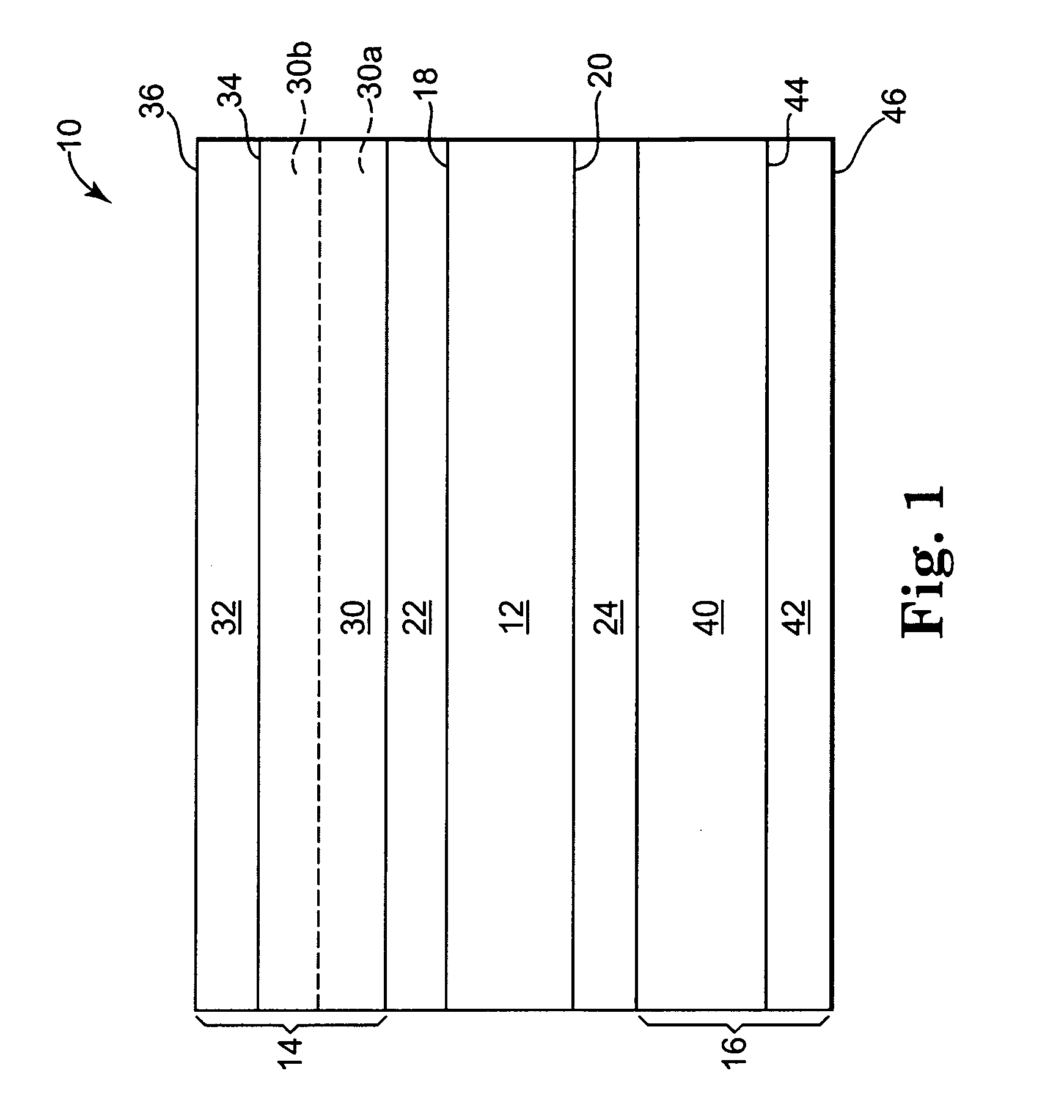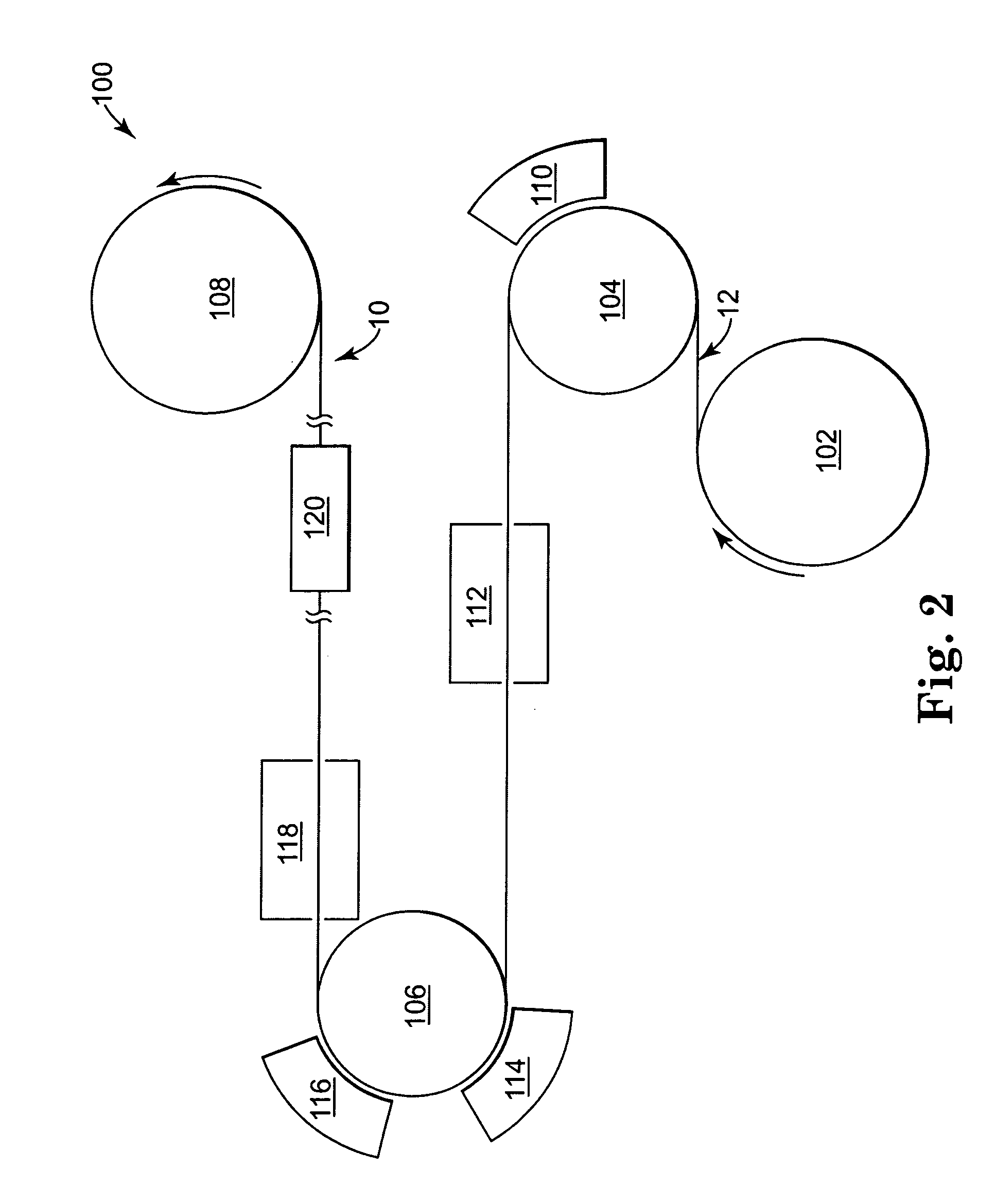Magnetic recording medium with dual magnetic sides and having a low resistivity
- Summary
- Abstract
- Description
- Claims
- Application Information
AI Technical Summary
Benefits of technology
Problems solved by technology
Method used
Image
Examples
example 1
[0075] In accordance with the present invention, Example 1 is formed with a thin PEN substrate, a first magnetic side, and a second magnetic side. The first and second magnetic sides are substantially identical to one another and each include a support layer and a magnetic layer. The support layers each include a primary pigment, a surfactant, carbon black, a head cleaning agent (HCA), binders, lubricants, and an activator mixed with parts per hundred of the primary pigment as shown in Table 1 below.
[0076] More specifically, support layer includes a primary pigment of DB-65 (available from Toda Kogyo Corp. of Hiroshima, Japan). The surfactant is Phenylphosphinic Acid included at 1.5 pph, the carbon black is Ketjenblack EC-600JD (available from Akzo Nobel of the Netherlands) included at 6.0 pph, and the HCA is HIT60A (available from Sumitomo Chemical Co. of Japan) included at 5.75 pph. In addition, the binders are UR4125 (available from Toyobo of Japan) included at 7.21 pph and MR-1...
PUM
 Login to View More
Login to View More Abstract
Description
Claims
Application Information
 Login to View More
Login to View More - R&D
- Intellectual Property
- Life Sciences
- Materials
- Tech Scout
- Unparalleled Data Quality
- Higher Quality Content
- 60% Fewer Hallucinations
Browse by: Latest US Patents, China's latest patents, Technical Efficacy Thesaurus, Application Domain, Technology Topic, Popular Technical Reports.
© 2025 PatSnap. All rights reserved.Legal|Privacy policy|Modern Slavery Act Transparency Statement|Sitemap|About US| Contact US: help@patsnap.com



